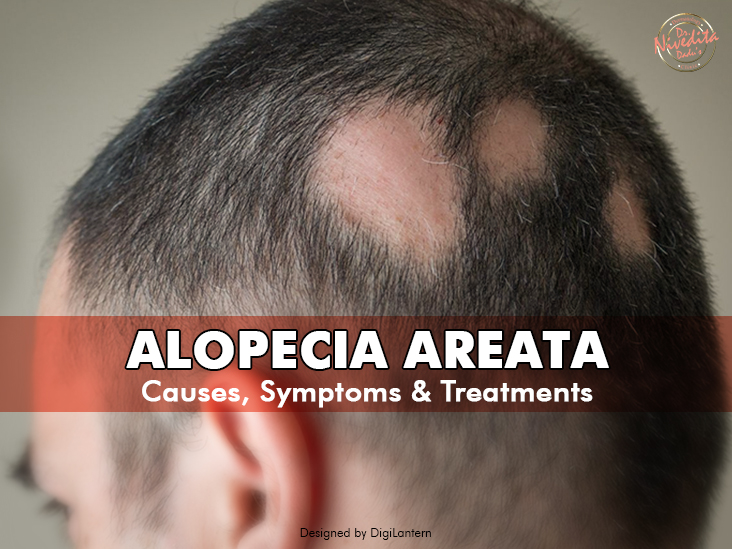There are a lot of myths related to Alopecia areata which is a hair disease. A lot of people wish to gain knowledge about Alopecia areata. Through this blog, we intend to clean the haze and increase awareness about the same.
• Alopecia areata is a common autoimmune skin disease causing patchy hair loss on the scalp, beard area, eyebrows, eyelashes. Sometimes, it affects other parts of the body as well.
Causes of Alopecia Areata:
• Alopecia areata is an autoimmune disorder. An autoimmune disorder is a condition that arises from an abnormal immune response to the normal functioning body cells. In the condition of alopecia areata, the hair follicles get affected. Usually, the bald patches appear immediately and impact only a limited area.
Risk factors:
• Risk factors include - Genetics, particularly when the disease occurs in people younger than 30 years, they usually have at least one family member who has been diagnosed with the same disorder.
• The risk of developing alopecia areata is also unusually high in people who are suffering from some other autoimmune disease like thyroid disease, vitiligo, pernicious anemia, and Down syndrome.
• Stress can also be an aggravating factor.
Symptoms:
Generally, this condition shows no symptoms. However, you can start seeing the onset of this problem as small round, coin-sized or oval patches of baldness appearing on the scalp. The area of bald skin looks smooth and normal with no itching, burning or redness. More severe forms of hair loss disorder can involve the entire scalp or the entire body, including the eyebrows, eyelashes, beard.
Types Of Alopecia Areata:
1. Alopecia Areata Patchy: The first and most common form is alopecia areata patchy, with one or more coin-sized hairless patches on the scalp or other areas of the body.
2. Alopecia Totalis: It is the one in which a total loss of the hair on the scalp occurs.
3. Alopecia Universalis: A complete loss of hair on the scalp, face, and body is termed as Alopecia Universalis.
Treatments:
Treatments of alopecia areata can vary depending on several factors, including age, the amount of your hair loss, duration of hair loss, and the area affected.
For limited areas of alopecia, the most effective initial therapy is a series of corticosteroid injections into the bald patches to suppress the immune reaction. In rapidly progressing and widespread disease, oral corticosteroid can be given.
Topical treatment includes topical application of steroid, immunomodulators, growth promoters, and counter-irritants.
If you or your loved ones are suffering from any of these symptoms, then consult your dermatologist immediately.
Stay healthy Stay blessed!

